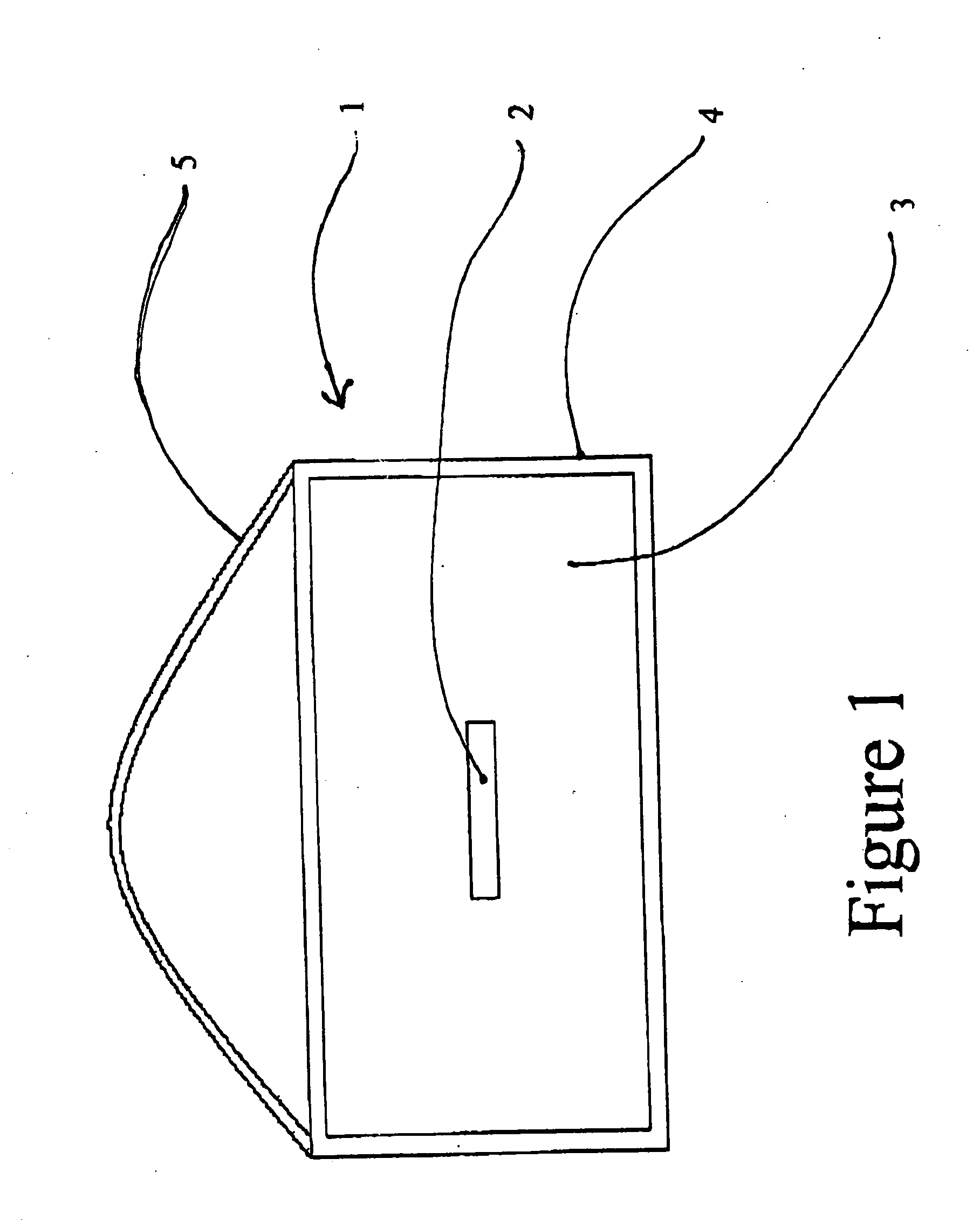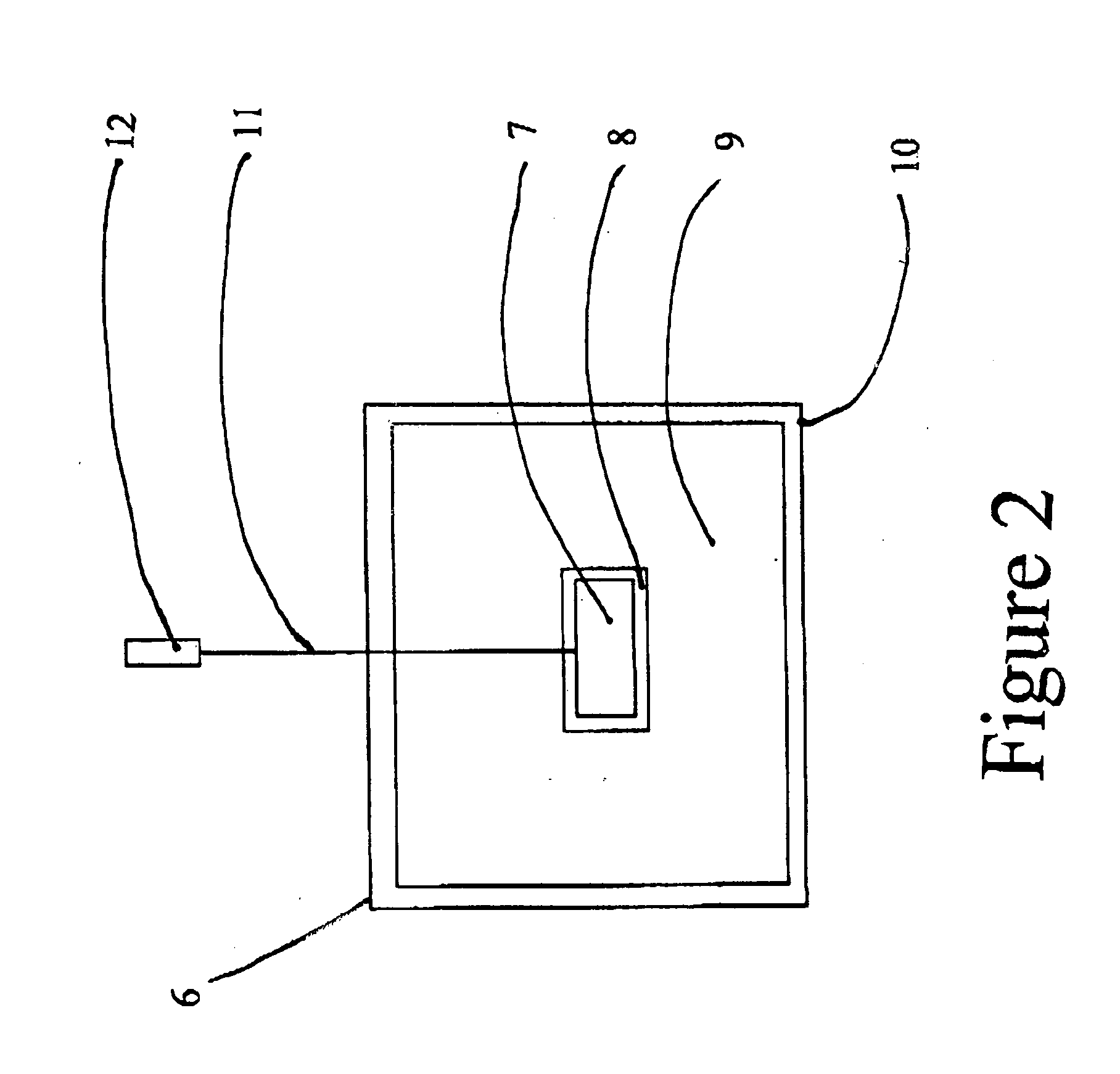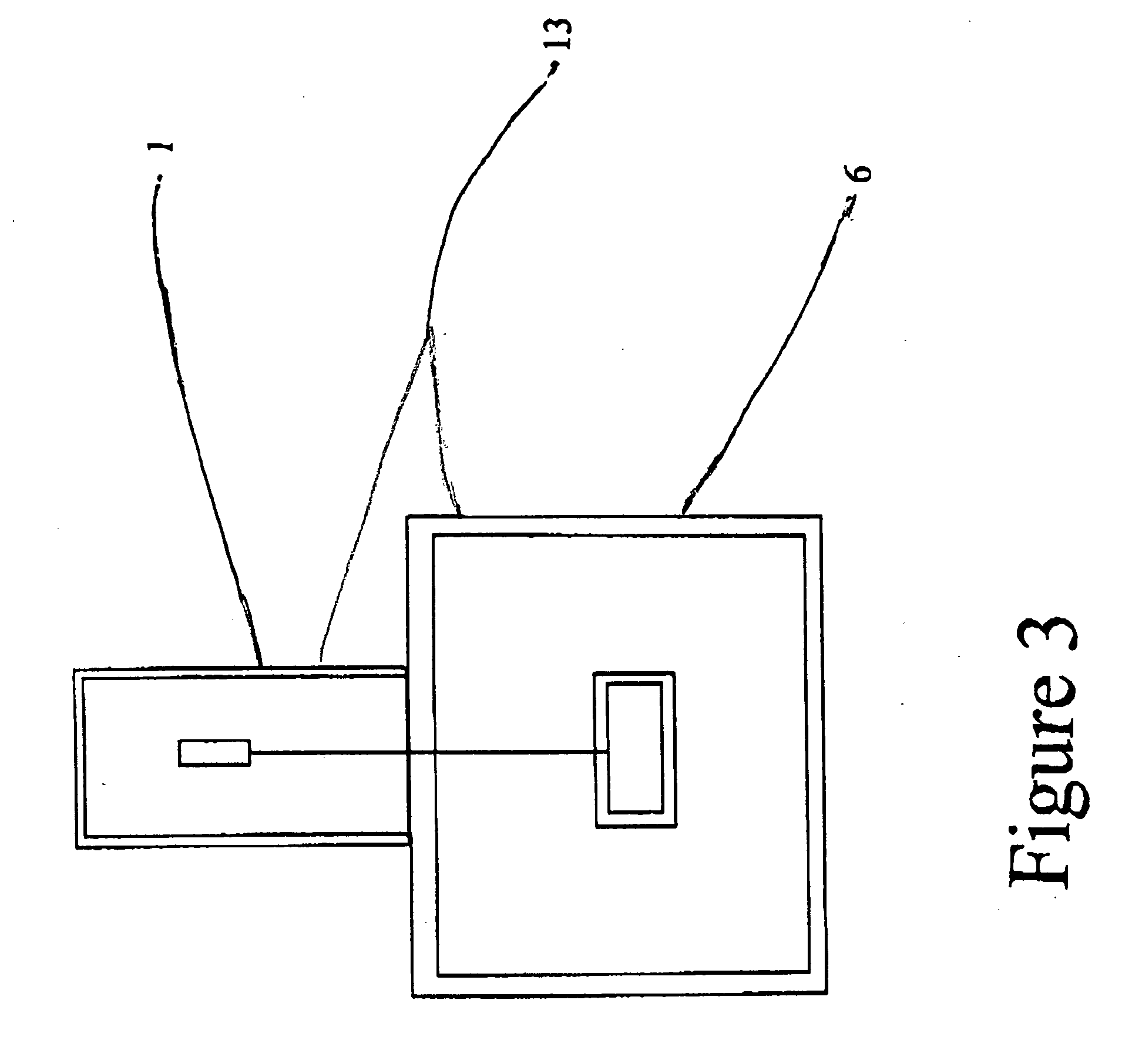Method and apparatus to indicate combustor performance for processing chemical/biological contaminated waste
a technology of combustor performance and waste, which is applied in the direction of microbiological testing/measurement, biochemistry apparatus and processes, etc., can solve the problems of inability to accurately predict the inactivation of all pathogens, the inability to use the final product of incinerators, and the inability to achieve sufficient destruction, so as to prevent the release of toxic agents
- Summary
- Abstract
- Description
- Claims
- Application Information
AI Technical Summary
Benefits of technology
Problems solved by technology
Method used
Image
Examples
example 1
Heat Treatment Effects on Simulated Bundles using a Biological Indicator
[0059]A biological indicator and a temperature sensor with data recorder were used on a number of different runs under differing conditions. The Biological inactivation temperature / time was correlated to the data from a thermocouple temperature sensor and mathematical modeling of the inactivation temperatures were calculated. Data and a theoretical discussion were presented in Wood et al, Environmental Science & Technology, 42(15) p. 5712-5717 (2008).
[0060]Briefly, the biological indicator was 100,000 spores of Geobacillus stearothermophilus on a strip placed in a small pipe, about 2 inches long. The pipe was placed in a bundle of 11 inches×3 inches×3 inches of drywall. Drywall pieces of 3 inches×3 inches×¾ inch were stacked with the small pipe containing biological indicator and the bundle was held in place by a mesh of 303 stainless steel. Some of these bundles were dry and some wet by being submerged in water...
example 2
Heat Treatment Effects on Simulated Bundles using a Thermocouple and Data Recorder
[0063]A highly insulated container of approximately an 8 inch cube was filled with wet Kaowool and a data recorder placed inside so that at least 2-3 inches coated it on all sides. The data recorder was previously coated with a sealant and placed inside a bag. A wire from the data recorder protruded from the highly insulated container and ended with a thermocouple.
[0064]Several runs were performed in the same incinerator as in Example 1. Initially the first run with the device being added to the incinerator along with other waste was with the thermocouple freely exposed to the incineration conditions. Additional runs were performed with the thermocouple placed in the same types of simulated bundles as in Example 1. Temperature measurements were recorded every 10 seconds for one hour that the device was present in the incinerator. The data was analyzed and compared to the data from the heat treatment ef...
PUM
| Property | Measurement | Unit |
|---|---|---|
| thick | aaaaa | aaaaa |
| height | aaaaa | aaaaa |
| height | aaaaa | aaaaa |
Abstract
Description
Claims
Application Information
 Login to View More
Login to View More - R&D
- Intellectual Property
- Life Sciences
- Materials
- Tech Scout
- Unparalleled Data Quality
- Higher Quality Content
- 60% Fewer Hallucinations
Browse by: Latest US Patents, China's latest patents, Technical Efficacy Thesaurus, Application Domain, Technology Topic, Popular Technical Reports.
© 2025 PatSnap. All rights reserved.Legal|Privacy policy|Modern Slavery Act Transparency Statement|Sitemap|About US| Contact US: help@patsnap.com



